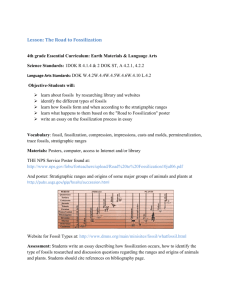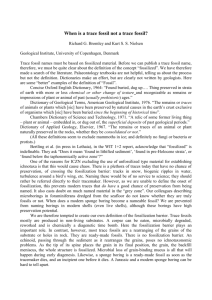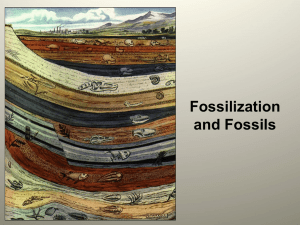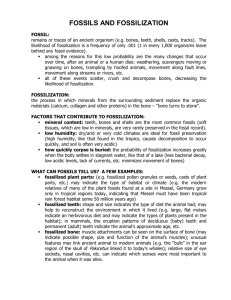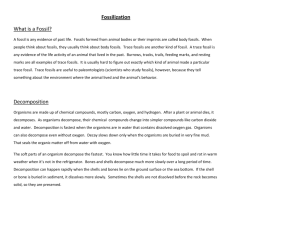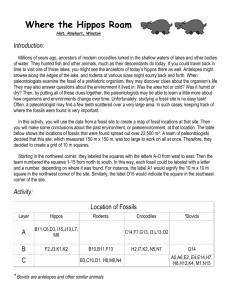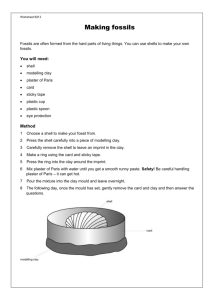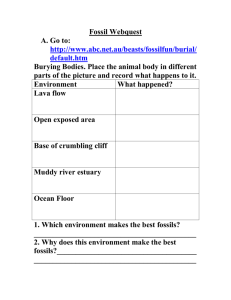Introduction to Fossils and Fossilization: Vocabulary
advertisement
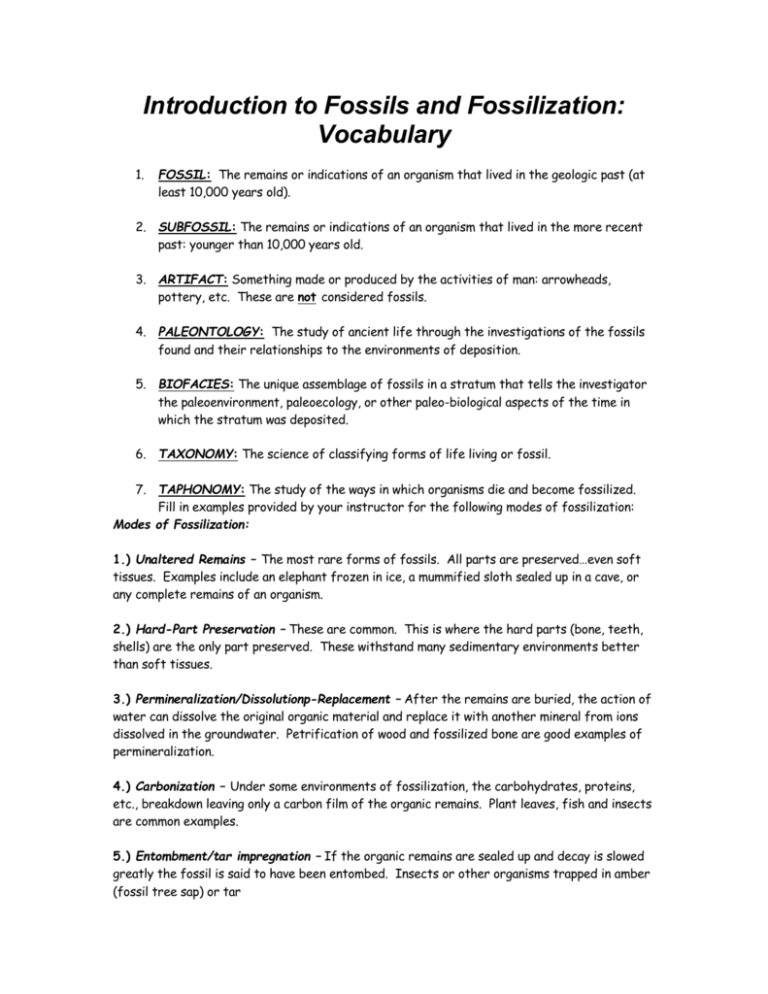
Introduction to Fossils and Fossilization: Vocabulary 1. FOSSIL: The remains or indications of an organism that lived in the geologic past (at least 10,000 years old). 2. SUBFOSSIL: The remains or indications of an organism that lived in the more recent past: younger than 10,000 years old. 3. ARTIFACT: Something made or produced by the activities of man: arrowheads, pottery, etc. These are not considered fossils. 4. PALEONTOLOGY: The study of ancient life through the investigations of the fossils found and their relationships to the environments of deposition. 5. BIOFACIES: The unique assemblage of fossils in a stratum that tells the investigator the paleoenvironment, paleoecology, or other paleo-biological aspects of the time in which the stratum was deposited. 6. TAXONOMY: The science of classifying forms of life living or fossil. 7. TAPHONOMY: The study of the ways in which organisms die and become fossilized. Fill in examples provided by your instructor for the following modes of fossilization: Modes of Fossilization: 1.) Unaltered Remains – The most rare forms of fossils. All parts are preserved…even soft tissues. Examples include an elephant frozen in ice, a mummified sloth sealed up in a cave, or any complete remains of an organism. 2.) Hard-Part Preservation – These are common. This is where the hard parts (bone, teeth, shells) are the only part preserved. These withstand many sedimentary environments better than soft tissues. 3.) Permineralization/Dissolutionp-Replacement – After the remains are buried, the action of water can dissolve the original organic material and replace it with another mineral from ions dissolved in the groundwater. Petrification of wood and fossilized bone are good examples of permineralization. 4.) Carbonization – Under some environments of fossilization, the carbohydrates, proteins, etc., breakdown leaving only a carbon film of the organic remains. Plant leaves, fish and insects are common examples. 5.) Entombment/tar impregnation – If the organic remains are sealed up and decay is slowed greatly the fossil is said to have been entombed. Insects or other organisms trapped in amber (fossil tree sap) or tar 6.) Trace Fossils – These are indications of past life but not really organic remains. These include footprints or tracks left in mud that subsequently turned into sedimentary rock. Other trace fossils include worm burrows, impressions of scales or skin, molds and casts (see below), and coprolites (fossil dung). Trace fossils are indications of the organism having been there, but no body parts are found. 7.) Molds and Casts – (A Type of Trace Fossil) – If a clam dies and is buried in sediment that later turns to stone, groundwater may percolate through the fossil, dissolving the original shell away, leaving only a 3-diminsional impression of the shell. This impression is the mold. Later, if foreign sediment fills in the mold, the rock may become eroded in a way that the cast falls away from the mold. Neither cast or mold is the original shell (or bone as the case may be) but a type of natural replica. Sometimes (especially in clams and snails), after death, the organic tissues decay away and sediment fills in the internal portion of the shell. Later the outer original shell may become dissolved away leaving behind an internal cast of the shell called a steinkern. 8.) Pseudo-fossils - This category describes inorganic rocks and minerals that happen to erode or form to resemble the organic remains of some plant or animal. A common pseudofossil is seen in dendrites, which are crystals of dissolved substances such as manganese oxides that grow between bedding planes of some strata. When the bedding plane is broken, the “dendrites” resemble plant fossils…but , of course, they are not. Environments Conducive to Fossilization In order for organic remains to become fossilized, the best prerequisites are: 1. if the remains hard parts: bones, teeth, shells 2. quickly buried to prevent being scavenged or destroyed 3. the lithification (rock-forming process) of the sediments containing the remains This does not mean that soft-bodied organisms cannot become fossils (they do), but that they need to be placed in low energy, reducing environments…lagoons, deltas, swamps.
